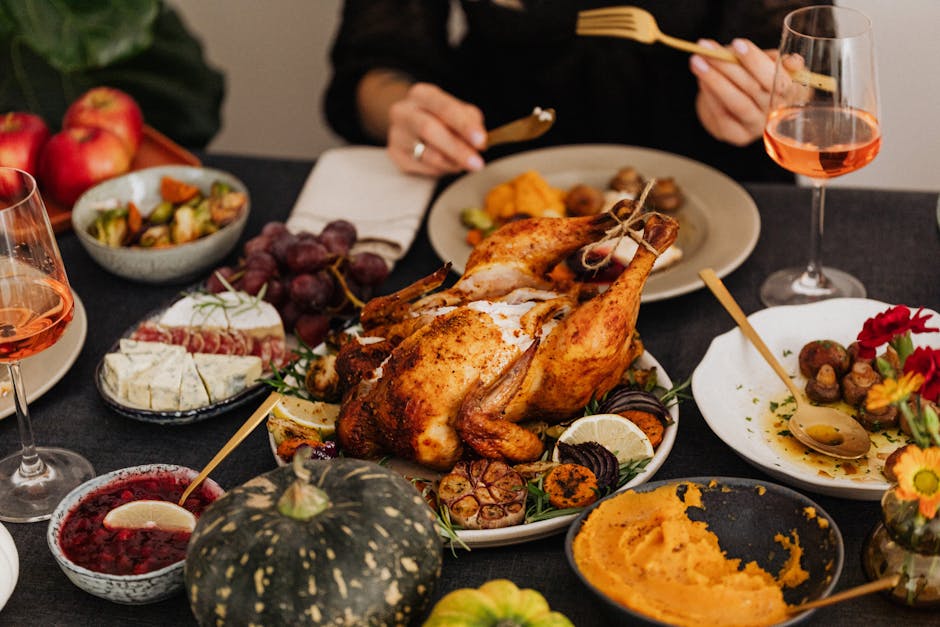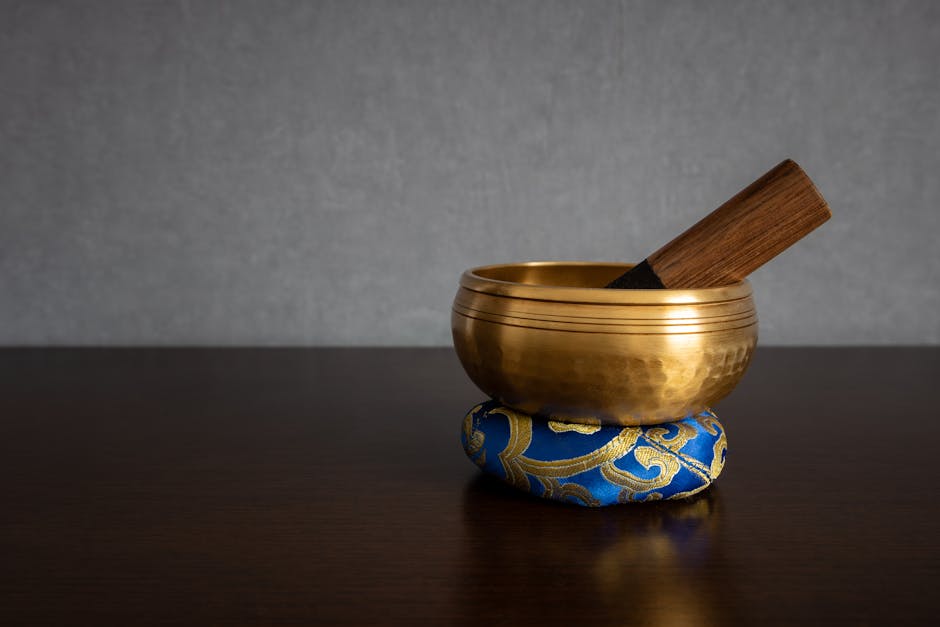Cooking with Intuition: Create Delicious Dishes Without Recipes
Have you ever stood in your kitchen, surrounded by fresh ingredients, only to be stumped by the thought of which recipe to follow? What if I told you that the most exciting and fulfilling dishes you can create come not from meticulously following recipes but from tapping into your senses, instincts, and creativity? Cooking with intuition opens a world of flavor opportunities and allows you to channel your inner chef. It’s time to harness your senses and craft spontaneous dishes that tell a story—your story.
Understanding the Value of Cooking with Intuition

Cooking is frequently portrayed as a strict discipline, governed by recipes and exact measurements. While there’s certainly a place for that, especially in baking, much of the joy of cooking lies in experimentation and creativity. Cooking without a recipe encourages you to listen to your instincts and rely on your senses—taste, smell, sight, and touch—ultimately leading to more gratifying culinary experiences.
Moreover, cooking with intuition often yields unique results that tell a story about your relationship with food. You might find yourself craving comfort food that reminds you of home or getting inspired by seasonal ingredients at the farmers’ market. This approach not only nourishes your body but nourishes your soul.
Engage All Your Senses

One of the easiest ways to begin cooking intuitively is to engage all your senses in the process. Let’s break this down:
-
Sight: Notice the colors and textures of your ingredients. A vibrant red tomato, crisp green bell pepper, and golden corn can start to paint a picture in your mind for a colorful salsa. The visual appeal can inspire choices and combinations that feel spontaneous yet satisfying.
-
Smell: The aroma of fresh herbs or sautéing garlic can instantly evoke memories and help you determine which ingredients might pair well together. For instance, the scent of basil might steer you toward a Mediterranean dish while lemongrass could inspire a vibrant Thai curry.
-
Taste: Trust your palate to guide you toward delicious combinations. Start with a base—perhaps a sauté of onions and garlic—and taste along the way to adjust flavors, adding salt, acidity, or spice as needed.
-
Touch: Feel the ingredients. The firmness of ripe avocados, the crunch of bell peppers, and the silkiness of cooked grains contribute to understanding how they might work together on your plate.
Start with a Solid Base

When cooking intuitively, it's beneficial to establish a solid foundation. Consider various bases that can serve as platforms for your spontaneous creation. For instance:
-
Grains: Quinoa, rice, farro, or couscous can provide a hearty base. They can either absorb flavors or be dressed with vibrant sauces to enhance your dish.
-
Proteins: Eggs, beans, chicken, or tofu can serve as versatile proteins to build your dish around. They can be seasoned in different ways to guide the entire flavor profile.
-
Vegetables: Fresh, seasonal vegetables are crucial. They not only add nutrition but can change the flavor dynamics when roasted, sautéed, or grilled.
The Power of Flavor Profiles
While cooking intuitively means letting go of strict recipes, understanding flavor profiles is essential. Combinations like sweet, sour, salty, and bitter create balance and depth. Explore how these flavors interact:
-
Sweet and Smoky: Think about roasted sweet potatoes paired with smoked paprika, bringing warmth and sweetness for a dynamic balance.
-
Sour and Spicy: A splash of vinegar or a squeeze of lemon can brighten up a dish, especially when paired with something spicy to create depth.
-
Herbaceous and Umami: Fresh herbs contribute a lively, green element that enhances umami-rich ingredients like mushrooms or soy sauce.
Understanding these profiles can unleash your creative cooking potential. More on this can be found in our article on decoding flavor profiles.
Make Use of Leftovers and Pantry Staples

Before embarking on your culinary adventure, take a quick inventory of what’s in your refrigerator or pantry. Often, leftovers or rarely-used pantry staples can inspire entirely new dishes. Transform yesterday's roasted vegetables into a flavorful frittata, or repurpose leftover rice into fried rice by adding your favorite sauces and freshly chopped veggies.
Using what you have not only saves money and reduces waste but also encourages creativity and spontaneity in the kitchen. You’ll find that minor alterations, like using leftover herbs or grains, can lead you to vibrant dishes filled with flavor. Explore how to elevate these creations in our piece on transforming leftovers.
Experimentation with Seasoning

Seasoning is the backbone of flavorful dishes. When cooking without recipes, allow yourself to play with a variety of seasonings. Here are some techniques to experiment with:
-
Herbs and Spices: Dried spices impart intense flavors, while fresh herbs introduce brightness. Try incorporating a blend of both to enhance your dishes.
-
Acidity: Acidic ingredients like vinegar, lemon juice, or even citrus zest can instantly lift flavors. When in doubt, taste as you go and add a splash of acid to round out a dish.
-
Aromatics: Onions, garlic, and ginger form a fantastic aromatic foundation. Sauté them to enhance the base notes before adding other ingredients.
Let your palate guide you as you season your dishes. Trying different combinations can lead to exciting discoveries, enriching your cooking experience.
Emotional Connections to Cooking

Our emotions often play a crucial role in the food we crave and the dishes we prepare. Rediscover your connection to food by thinking about the memories food can evoke. Cook dishes that remind you of family gatherings, past travels, or cherished celebrations.
Incorporate this emotional connection by using recipes inspired by your favorite experiences. Perhaps it's a dish you enjoyed while traveling abroad or something your grandmother made when you were young. Tapping into these feelings not only adds emotional depth to your cooking but also sparks your imagination and encourages the development of intuitive recipes.
Creating Flavor Journeys

Every meal can be an adventure. One enjoyable way to explore is by creating flavor journeys inspired by global cuisines. For instance, perhaps you want a dish with Indian, Thai, or Mexican influences. Consider what ingredients correlate with those regions and build your dish from there, mixing and matching to create your adventure.
For a Thai-inspired dish, consider using coconut milk, lemongrass, and fish sauce, and layer in fresh vegetables. An Indian twist might include warming spices such as cumin, coriander, and turmeric mixed with yogurt. Find dishes that inspire you and keep yourself open to experimenting with various flavor combinations.
Discover more about the cultural aspects of culinary flavor in our article on culinary cartography.
Inviting Friends and Family to Join

Cooking can be a wonderful bonding experience. Invite friends or family members to join you in the kitchen for a collaborative cooking session. Encourage open dialogue about flavors, ideas, and sensory experiences. Share the responsibility of ingredients, each person contributing something unique, allowing intuitive cooking to flourish.
Additionally, hosting potlucks can be a great way to explore various flavor profiles. Allow guests to bring their favorite dishes, and take inspiration from their flavors to enrich your own intuitive cooking journey.
Embrace Kitchen Failures

Not every cooking experience will lead to a masterpiece, and that’s perfectly okay. Embracing kitchen failures is vital for growth in your culinary journey. Messy experiments can lead to unexpected flavors or texture discoveries that might surprise you.
For example, if a dish tastes bland, consider it an opportunity to recognize pitfalls and learn from them. Adjust sauce ratios, seasoning, and cooking techniques as you refine how to bring out the best in the food you cook.
Embracing the Art of Mindfulness in Cooking

Mindful cooking goes hand in hand with intuitive cooking. Take your time in the kitchen, engaging in each step of the process. Notice the sounds, colors, and textures as you chop, sauté, boil, and taste. Slow down to the rhythm of cooking, allowing each sensation to register.
Mindfulness can lead to lower stress levels and a more enjoyable cooking experience. Find ways to grow this practice by immersing yourself completely in the process and considering what the dish means to you personally.
Several tips on integrating mindfulness into your cooking can be found in our article on mindful meals.
Final Thoughts: Your Culinary Adventure Awaits

Are you ready to embark on the magical journey of cooking with intuition? By harnessing your senses, embracing spontaneity, and engaging in mindful culinary practices, you can create delectable dishes that reflect your unique palate and personal experiences.
Remember, cooking is not solely about following rules; it’s about exploration, love, and creativity. So put down the measuring cups and embrace the wild side of the kitchen. Don’t hesitate to experiment, taste, and invent—your taste buds will thank you!




